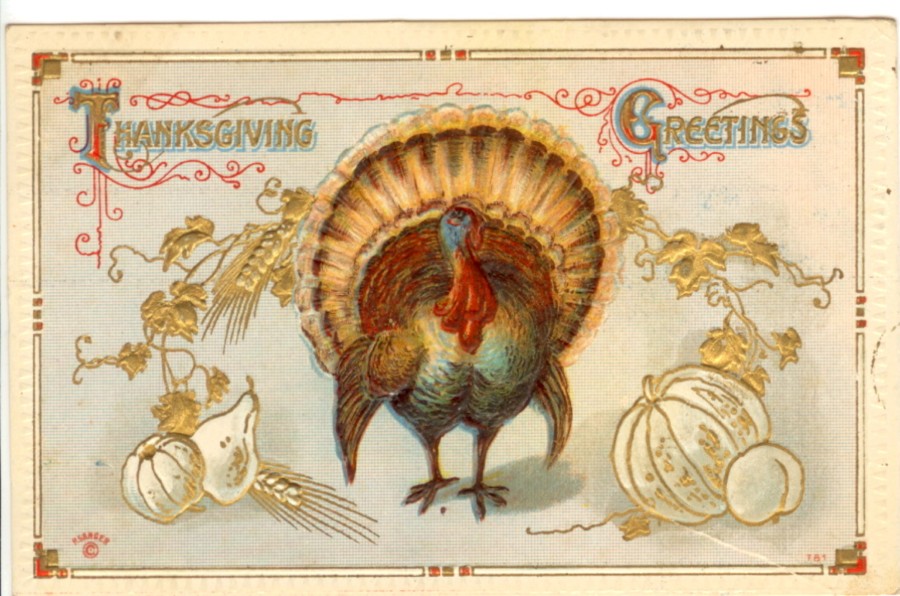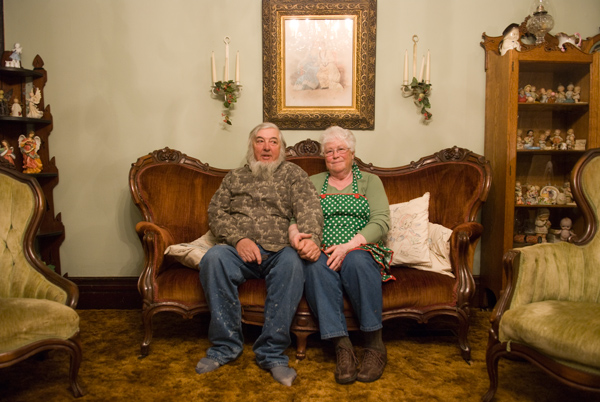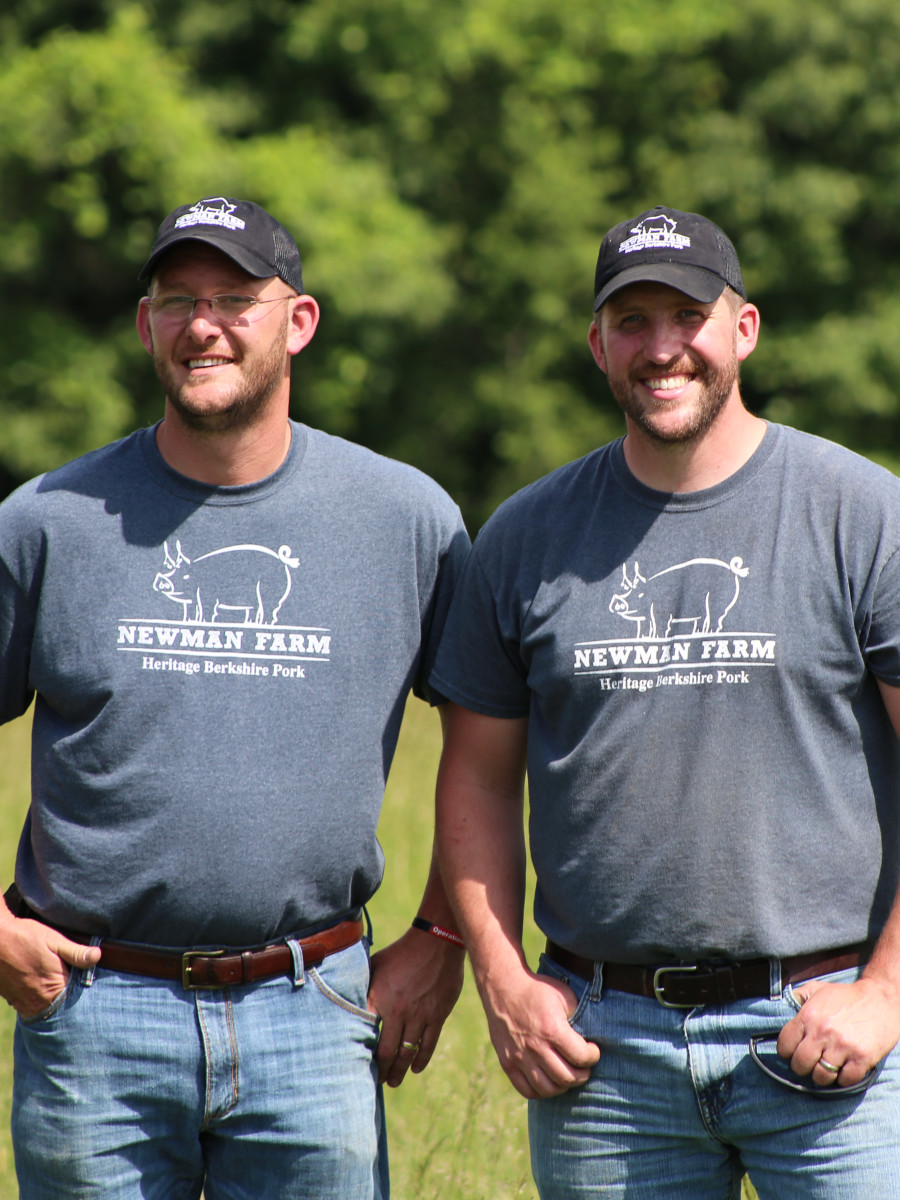The Founding Farmers of Food Radio
Thanksgiving is the most deliciously stressful time of year. Beyond the inevitable anxiety that comes from large family gatherings - there is a new and growing pressure to have the most ‘earth-friendly’ Thanksgiving. In fact, in the past year, publications like The Smithsonian and The Guardian, have published lists detailing how to have the most sustainable Thanksgiving.
However, while these lists predominantly focus on either eating locally sourced meat or none at all, those are by no means the only two factors to consider in the complex equation of sustainable eating. And that’s where Heritage Foods USA (HFUSA) comes in.
So what does ‘heritage’ mean? Heritage breeds revert back to traditional livestock farmed by our ancestors. Today, heritage breeds are almost non-existent. In her 2001 New York Times article titled The Hunt for a Truly Grand Turkey, One That Nature Built, cookbook author Marian Burros states, “The turkey you'll be eating could never exist in nature. After 50 years of over engineering, it has morphed into a bizarre, ungainly beast that can no longer run, fly or even lay eggs.”
Commercial turkeys today are engineered to be as big as possible at the lowest possible cost. While this evidently means an increase in white meat and a loss of flavor, it also results in the birds’ losing the ability to successfully mate and produce fertile eggs without human intervention. As large-scale agriculture continues to grow, we move farther and farther away from eating from the wild turkeys indigenous to the Americas. In fact, in 2006, less than one percent of the 265 million turkeys consumed in America were heritage breed.
Heritage Foods USA exists to promote genetic diversity, small family farms, and a fully traceable supply chain. As HFUSA (and Heritage Radio Network) founder Patrick Martins states on Episode 120 of The Main Course, “Thanksgiving is the one day of the year that Heritage is a big company.”
In traditional Thanksgiving fashion, HFUSA and HRN want to extend their gratitude to five of their founding farmers. These farmers are not only having a profound impact on prolonging heritage bloodlines, they were also the ones who helped bring HRN into existence. Their work in the fields and abattoirs producing the very best foods in America funded the early years of food radio.
1) Good Shepherd Poultry Ranch
[caption id="attachment_32101" align="aligncenter" width="640"] Photo: Jim Richardson[/caption]
Photo: Jim Richardson[/caption]
Name: Frank Reese
Farm: Good Shepherd Poultry Ranch
Location: Lindsborg, Kansas
What He Farms: Heritage Breeds of Chicken, Turkey, Duck and Geese
Meet Frank. He’s the original founding father of HFUSA. A fourth generation farmer, Frank has had a deep love of birds for as long as he can remember. As Frank states, “At the age of five I remember going to the Trow Farm and seeing 5,000 Bronze Turkeys. It was then I fell in love with heritage birds.” Today, Frank is regarded as one of the best poultry breeders in America.
Without Frank Reese, there would be no HFUSA or HRN. Branching off of Slow Food USA, HFUSA originally formed in order to help sell rare breed heritage turkeys for the week of Thanksgiving 2002. Frank was the farmer behind this initial effort and continues to be a driving force of HFUSA.
While before 2001, Good Shepherd Ranch raised only a few hundred birds, today it raises around 10,000 - an amazing achievement for advocates of biodiversity of birds and other proteins alike.
2) Lazy S. Farms
Name: Larry and Madonna Sorrell
Farm: Lazy S. Farms
Location: Cloud County, Kansas
Size of Farm: 200 acres
What They Farm: Red Wattle, Berkshire, Gloucestershire Old Spot, and Mule Foot Pigs
Larry and Madonna have been running Lazy S. Farms for over 45 years. They have been with HFUSA since 2002. In fact, HFUSA tempted Larry out of retirement.
While Larry and Madonna originally primarily bred heritage turkeys, they are now - according to Heritage Foods USA - the ‘undisrupted royalty’ of Red Wattle pigs in the country. Red Wattle pigs first came to America in the 1700s and is known for its large decorative wattle that hangs off its neck. While previously considered endangered, due in large part to Larry and Madonna’s work, Red Wattle Pigs have been upgraded on conservation lists by the American Livestock Breeds Conservancy.
3) Newman Farm
Name: The Newman Family: Mark and Rita and their sons, David and Chris
Farm: Newman Farm
Location: Myrtle, Missouri
Size of Farm: 210 acres
What They Farm: Berkshire Pigs
Today Newman Farm is run by David Newman, a professor of pig science in North Dakota, and his brother Chris. The Newman brothers work to preserve their family’s tradition of raising purebred Berkshire breed pigs - also known as Kurobuta (Black Pig in Japanese) - which their father started over 40 years ago.
Originally imported to North America in 1823, the Newman brothers currently produce the closest taste to the original stock of Berkshire pigs. These pigs are prized (and purchased!) by nationally renowned chefs such as Mario Batali and Lidia Bastianich.
4) Paradise Locker Meats
Name: The Fantasma Family - Parents Teresa and Mario and sons Nick and Louis.
Location: Trimble, Missouri
Operation Type: Abattoir
Length of Operation: 20 Years
"Paradise Locker Meats is at the epicenter of the heritage-meats movement," states Patrick Martins, "It's the best-tasting meat in the country."
Run by the Fantasma Family, Paradise Locker Meats sources its meats from family farms and processes over 200 pigs a week for HFUSA. In 2014, they won national recognition at the annual American Cured Meat Championship.
Paradise Locker Meat is a Certified Humane abattoir. This is important on both a moral and practical level, as stressed animals typically produce tougher meat.
In his acclaimed book, Eating Animals, Jonathan Safran Foer travels to Paradise Locker Meats. As his visit comes to a close, he writes, “It’s time to go. I want to spend more time with Mario and his workers. They are nice people, proud, hospitable people - the kind of people, one fears, that might not be able to stay in agriculture for all that much longer.” Foer would be happy to know that Paradise Locker Meats’ business is doing very well and their operations have, since the book’s publication in 2009, doubled in size.
5) Good Farms
Name: Amy and Craig Good
Farm: Good Farms
Location: Olsburg, Kansas - just outside of Manhattan, Kansas (aka “The Little Apple”)
Size of Farm: 900 acres
What They Farm: 100% Angus Cattle, Several Heritage Breeds of Pig
For over fifty years, Craig Good has been farming livestock at Good Farms, located in Olsburg, Kansas. Craig’s Father, Don, started the farm in 1961 and Craig took it over in 1981. The Goods began working with HFUSA in 2003.
The Good Farm is extremely diverse for its small size - raising a variety of crops as well as 100% Angus beef and several heritage breeds of pig. In fact, Craig has said that working with HFUSA has allowed the farm to make enough profit without needing to increase in size. Furthermore, the small size of the farm provides Craig with ample room to experiment.
Craig frequently experiments with the diets of his Gloucestershire Old Spot pigs. For example, instead of feeding them the traditional diet of feed and oats, he feeds them dried cranberries and plums. These diet chances have received positive reviews - as they have made the Old Spot’s fat significantly more fragrant.
While it is Thanksgiving time, you don't need a major holiday to eat sustainably. HFUSA does mail orders from these farmers year round. You can check our their website here.
And tune in to Heritage Radio Network for thousands of hours of food radio.









